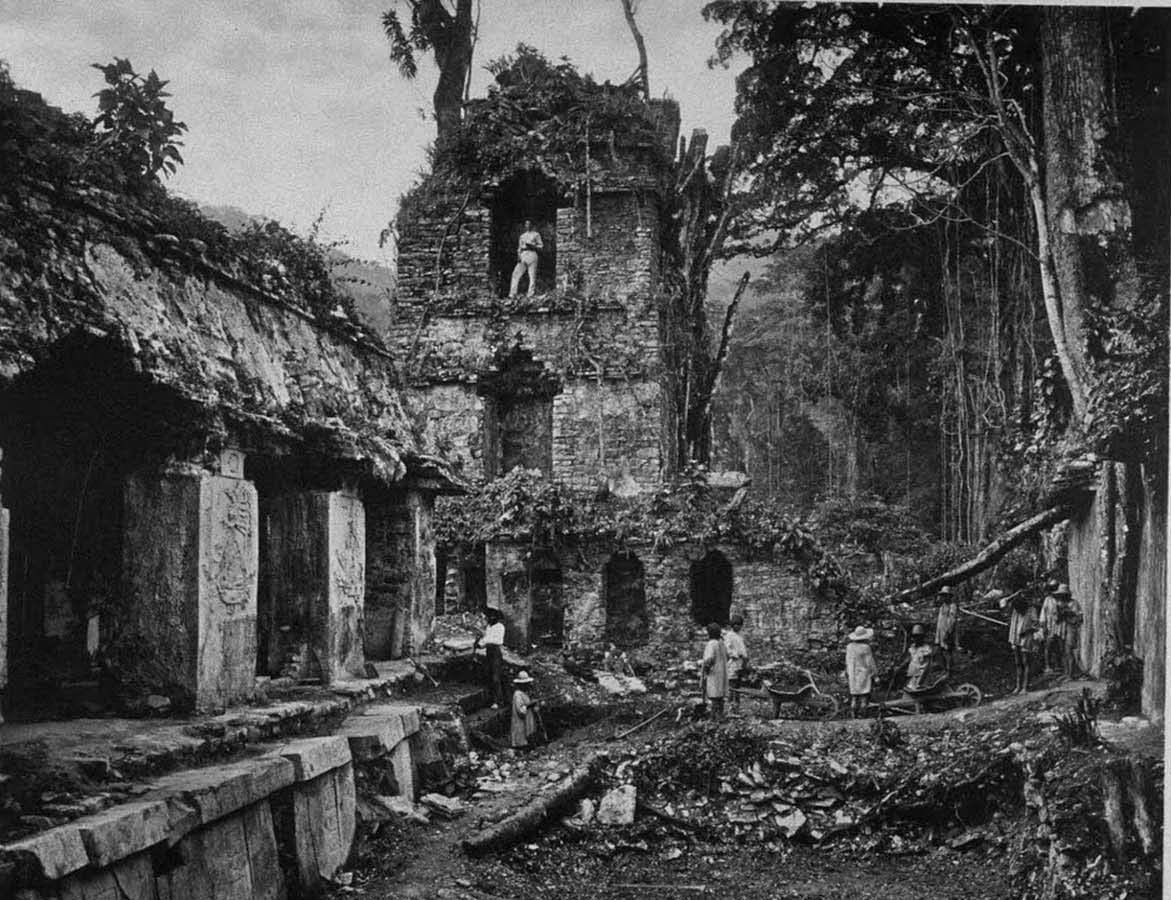.jpg)
George Gordon sits next to a figure seated on a throne on the Hieroglyphic Stairway, Copan, Honduras, 1900.
.gif)

Alfred Maudslay in the tower of the palace, Palenque, Mexico, 1890.
.jpg)
George Gordon sits next to a figure seated on a throne on the Hieroglyphic Stairway, Copan, Honduras, 1900.
.jpg)
Photograph of Copán taken by A.P. Maudslay.
.jpg)
Temple of the Inscriptions Palenque, Mexico, 1890.
.jpg)
Alfred Maudslay at Chichenitza, Mexico, 1900.
.jpg)
Temple Chichenitza by Maudslay, 1900.
.jpg)
Stela in Copan, Honduras, 1900.
.jpg)
Zoomorph B (also known as Monument 2), south face, date 780 AD. Discovered by Alfred Maudslay.
.jpg)
Stela E, Quiriguá, Guatemala. Photo by Maudslay.
.jpg)
Lorenzo Giuntini and assistants creating a plaster mold of Zoomorph P at Quirigua, Guatemala, 1883.
.jpg)
Zoomorph P at Quirigua, Guatemala, 1883.
.jpg)
Stela 1 at Copan, Honduras, as found by Alfred P. Maudslay, 1880s. A Honduran man stands next to the stela for scale.
.jpg)
Stela D (also known as Monument 4), dated AD 766. “The inscription on each side of the Stela is headed by an initial series of six squares of picture-writing”, Alfred Maudslay noted of this monument.
.jpg)
Stela D, dated AD 766. The figure depicted on the craving is that of K’ak’ Tiliw Chan Yopaat, ruler of Quirigua in the mid-eighth century.
.jpg)
.jpg)
Zoomorph G, dated AD 785. The monument is now understood by scholars to represent a “Waterlily Jaguar” with human figures wearing headdresses emerging from both ends.
.jpg)
The discovery of an ancient Maya statue deep within the jungles of Honduras, 1885.
.jpg)
Quiriguá, a man standing with his right hand resting on Stela E, east side. 1894.
(Photo credit: The British Museum / Pitt Rivers Museum /
Library of Congress / The Mysterious Maya Civilization By Emily
Mahoney
Adventures Unlimited Press > Mayan & Olmec Studies